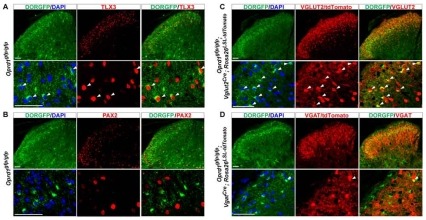A NIDA-funded study explored how opioids such as morphine act within pain circuits in the brain and spinal cord, while attaching to receptors on the surface of nerve cells (neurons). The two most abundant receptors are the delta and mu opioid receptor types (DOR and MOR, respectively). The study in mice determined that in most regions examined in different types of pain, neurons have the DOR or MOR on their surface, suggesting that the two receptors independently control distinct forms of pain. This novel information clarifies where and how opioids act in our body to block pain, and may facilitate the development of more efficient and safer pain management medications
Study:
- Wang, et al. Functional Divergence of Delta and Mu Opioid Receptor Organization in CNS Pain Circuits. Neuron. http://www.cell.com/neuron/fulltext/S0896-6273(18)30179-X

